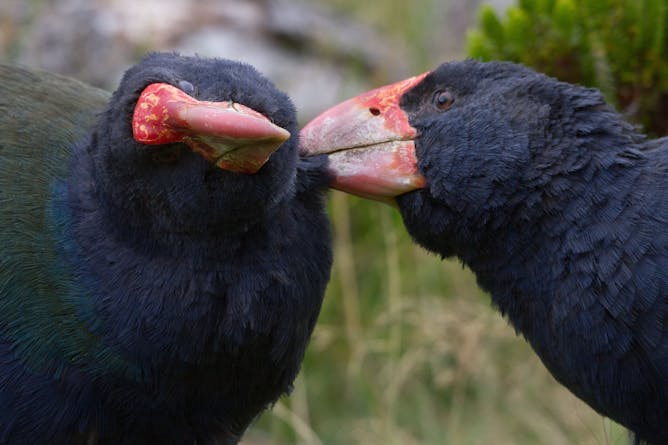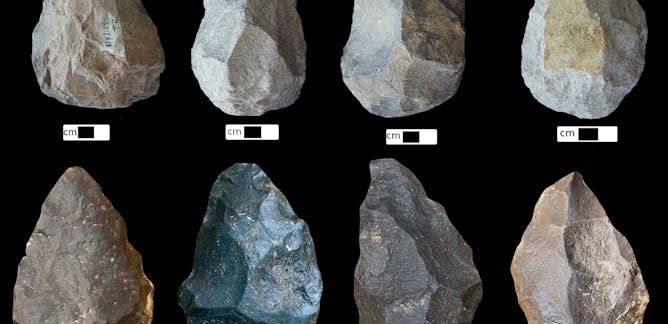|
Nau mai, haere mai and welcome to this week’s New Zealand newsletter.
Following weeks of anticipation, the NZ Herald launched digital subscriptions for its premium online content this week. Its paywall is the first for a general newspaper in New Zealand. AUT media researcher Merja Myllylahti looks at how the move might affect other media organisations and readers.
The latest update on the state of the environment in New Zealand paints a particularly bleak picture about the loss of native ecosystems. Victoria University of Wellington ecologist Mike Joy explores the main drivers that threaten many of New Zealand’s native species both on land and in the oceans.
Prime Minister Jacinda Ardern is also the minister responsible for the government’s goal of reducing child poverty. Newly released statistics show that almost one in four (23% or 254,000) children live in poverty once housing costs are accounted for. Victoria University of Wellington research fellow Michael Fletcher analyses the numbers and what it would take for the government to reach its targets.
You’ll find more expert analysis from New Zealand academics as well as from The Conversation’s other international editions in this newsletter. Many thanks for reading. Feel free to share this newsletter with colleagues and friends. Ngā mihi nui ki a koutou katoa.
|

Subscriptions for digital content are considered an important part of revenue for newspapers.
from www.shutterstock.com
Merja Myllylahti, Auckland University of Technology
New Zealand's largest general newspaper has launched a paywall this week, with likely repercussions for other media organisations and readers.
|

About 74% of New Zealand’s land birds, including the endemic takahe, are either threatened or at risk of extinction.
AAP/Brendon Doran
Michael (Mike) Joy, Victoria University of Wellington; Sylvie McLean, Victoria University of Wellington
The latest update on the environment highlights that New Zealand has the world's highest proportion of indigenous wildlife species either threatened or at risk of extinction.
|

Some children in New Zealand live in such hardship that they don’t have a good pair of shoes and have to put up with feeling cold.
from www.shutterstock.com
Michael Fletcher, Victoria University of Wellington
The New Zealand government has set targets for reducing child poverty, but with hundreds of thousands of children living in poverty, this goal remains a challenge.
|

The campaign to protect Ihumaatao for its cultural values shows how such landscapes continue to fall through the cracks of New Zealand’s heritage system.
Qiane Matata-Sipu
Nicola Short, Auckland University of Technology; Frances Hancock, University of Auckland; Tim McCreanor, Massey University
Built colonial heritage represents more than 80% of the sites on New Zealand’s national heritage list. This leaves some 700 years of Indigenous settlement significantly under-represented.
|

Prince William visited Al Noor mosque in Christchurch and met survivors of the attack.
Joseph Johnson/AAP
Hanlie Booysen, Victoria University of Wellington
New Zealand's response to the Christchurch mosque attacks is seen as a new way of reacting to violent extremism. The challenge now is how to translate domestic cohesion into foreign policy.
|
From The Conversation's international editions
|

David McCooey, Deakin University
Les Murray's signature style was a potent mix of ordinary language, specialist vocabulary, and eccentric syntax. His poetry made us see things anew.
| |

Robert Hassan, University of Melbourne
George Orwell's dystopian classic can tell us a lot about contemporary politics and power, from Donald Trump to Facebook.
|

Mona Krewel, Cornell University; Sabrina Karim, Cornell University
After the Christchurch mosque shootings, New Zealand's prime minister didn't start a war on terror. She covered her head, cried, paid for funerals and passed gun control. Is it because she's a woman?
| |

Nicholas Beuret, University of Essex
Never mind the future – rich countries have already benefited from climate change, while poor countries have suffered dramatic economic losses.
|

Caroline Gray, Aston University
Sánchez seeks to build alliances but not a formal coalition as the Socialists win but fall short of an absolute majority.
| |

Amanuel Beyin, University of Louisville; Ahmed Hamid Nassr., University of Ha'il; Parth Randhir Chauhan, Indian Institute of Science Education and Research Mohali
There's almost no place on earth that doesn't hold traces of humanity. But which routes did our ancestors follow first?
|
|
|